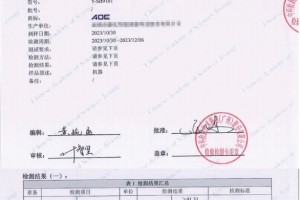原标题:【京研教育】2020年北京大学翻译硕士专业考研模仿试题
更多考研考博咨询信息请重视考研考博微信大众号:京研教育
新浪微博:京研考研
Task A:英译汉 (I)
Why let them walk when they can fly? This is a question that is being asked by more and more parents in the UK who believe their children to be “gifted” or child prodigies. Among the calls received by the National Association of Gifted Children (NAGC) are many who claimed their offspring demonstrate remarkable ability across all subjects, often with problem-solving and verbal skills way beyond their years. Then there are those who say their children are gifted in specific areas such as maths, or that they are exceptionally talented in non-academic field such as art, sport or music.
The present government’s focus on provision for the elite students in UK schools is doubtless significant. Among today’s legal requirements are for secondary schools to identify between 5% and 10% of their pupils as “gifted and talented” and to encourage them to sit General Certificate of Secondary Education early if possible. The optimist’s view is that this has increased the likelihood of tapping into the potential of more young geniuses; the cynic’s is that it has contributed to such labels being used far more loosely.
Bright children often, of course, have ambitious parents behind them. Even Ryde College, famed for its proportion of students taking exams early, argues that its high achievers are not exceptional necessarily —“but children who have been given the opportunities to achieve”.
As educational psychologist Ruth Coppard suggests, “Some so-called child prodigies are little more than the product of highly ambitious parents. If you’ve had as much tutoring and practice in a subject at the age of seven as most 19-year-olds have, then there’s at least a chance that you’ll function in that subject area similarly to a 19-year-old”.
(II)
Cowboys’ lives centered around the roundup and the cattle drive. Every winter and summer the cattle fed at the ranch. In the spring and autumn the cowboys rounded up the cattle, and separated the beef cattle from the rest of the herd, and drove them over many miles of open country to the nearest railroad station. From there the cattle were sent to slaughterhouses. In the 19th century, railroads were few and far between. Driving the cattle was a long hard job. There was danger from cattle thieves. The cowboy rose at sun-up to start the cattle moving. They drove them all day through the heat or dust or wind. The men were often on horseback 15 hours a day. Cowboys had to be skillful and strong. They had to be skilled horsemen and good gunmen. Their clothing was made for protection. The wide-brimmed hat was worn to protect them from the sun, dust and the rain. The gun protected them against cattle thieves.
(III)
Words That Change a Life
Not a big moment, perhaps, yet small moments sometimes last a very long time. And a few words – though they may mean little at the time to the people who say them can have enormous power.
As a boy, Dalkoff was terribly insecure and shy. He had few friends and no self-confidence. One day in October 1965, his secondary-school English teacher, Ruth Brauch, gave the class an assignment. The students had been reading To Kill a Mockingbird. Now they were to write their own chapter that would follow the last chapter of the novel.
Dalkoff wrote his chapter and turned it in. Today he cannot recall anything special about the chapter he wrote, or what grade Mrs. Brauch gave him. What he does remember – what he will never forget – are the four words Mrs. Brauch wrote in the margin of the paper: “This is good writing”.
Four words. They changed his life.
“Until I read those words, I had no idea of who I was or what I was going to be,” he said. Over the rest of that year in school, he wrote many short stories and always brought them to school for Mrs. Brauch to evaluate. She was encouraging, tough and honest. “She was just what I needed,” Dalkoff said.
He was named co-editor of his second-school newspaper. His confidence grew; his horizons broadened, he started off on a successful, fulfilling life. For his 30th secondary-school reunion, Dalkoff went back and visited Mrs. Brauch, who had retired. He told her what her four words had done for him. Mrs. Brauch was especially moved by the story. “At that moment I think we both realized that Mrs. Brauch had cast an incredibly long shadow,” he said.
“This is good writing.” So few words. They can change everything.
Task B: Translate the following paragraphs into English:
(I)
依据一项颇有争议的新研讨, 一种维护动物在生命前期免患癌症的至关重要的蛋白,好像会在动物生命的晚期形成与变老相联系的许多机能的退化。
这项研讨效果宣布在星期五的《天然》杂志上,被评论家认为是“提出了令人震惊的可能性,即变老可能是由维护咱们免患癌症的天然卫兵的副效果形成的。”
该研讨是在小鼠身上进行,是否适于人类还难以确定。但鼠与人类是进化的近亲,这项新研讨有必定的概率会引起人们竞相研讨,以提醒患者身上癌生物学与变老之间切当的联系。
(II)
作为我国最早的教育中心和科学研讨中心,北京大学聚集了我国优异的专家学者,不断开拓创新,改造开展,以培养出的高质量人才和做出的高水平科学效果深入影响和推进着我国高等教育的航程。
一百年来,以北京大学为代表的我国现代大学群,在我国走向现代化的历史进程中起到了重要的前锋效果,形成了荣耀的革命传统和优秀的学术传统。
(III)
心爱的南京
南京,她自新我国树立以来发作的巨大而深入的改变愈加令人欢天喜地。“虎踞龙盘今胜昔,翻天覆地慨而慷”。从949年4月23日始,公民真实成为这座陈旧城市的主人。金陵回春,古城重生,旧日饱受的耻辱和灾祸,至此好像梦魇终被脱节。公民在自己的土地上勤劳劳动,把古城南京化装扮得面貌一新。特别是近十几年来,改革开放又给这座美丽的古城注入了新的生机,簇新的工业、灵通的运送、如画的城市建设、昌盛的第三产业、多彩的文化生活,都使这个具有古都特征的现代城市焕宣布勃勃英姿。孙中山先生所预言的“南京将来之兴旺未可定量也”,正在逐渐成为实际。
Task C: Writing
Directions:
A. Study the following graphs carefully and write an essay in about 200 words.
B. Your essay must be written neatly on ANSWER SHEET Ⅱ.
C. Your essay should cover these three points:
a. effect of the country’s growing human population on its wildlife
b. possible reason for the effect
c. your suggestion for the wildlife protection
责任编辑:








